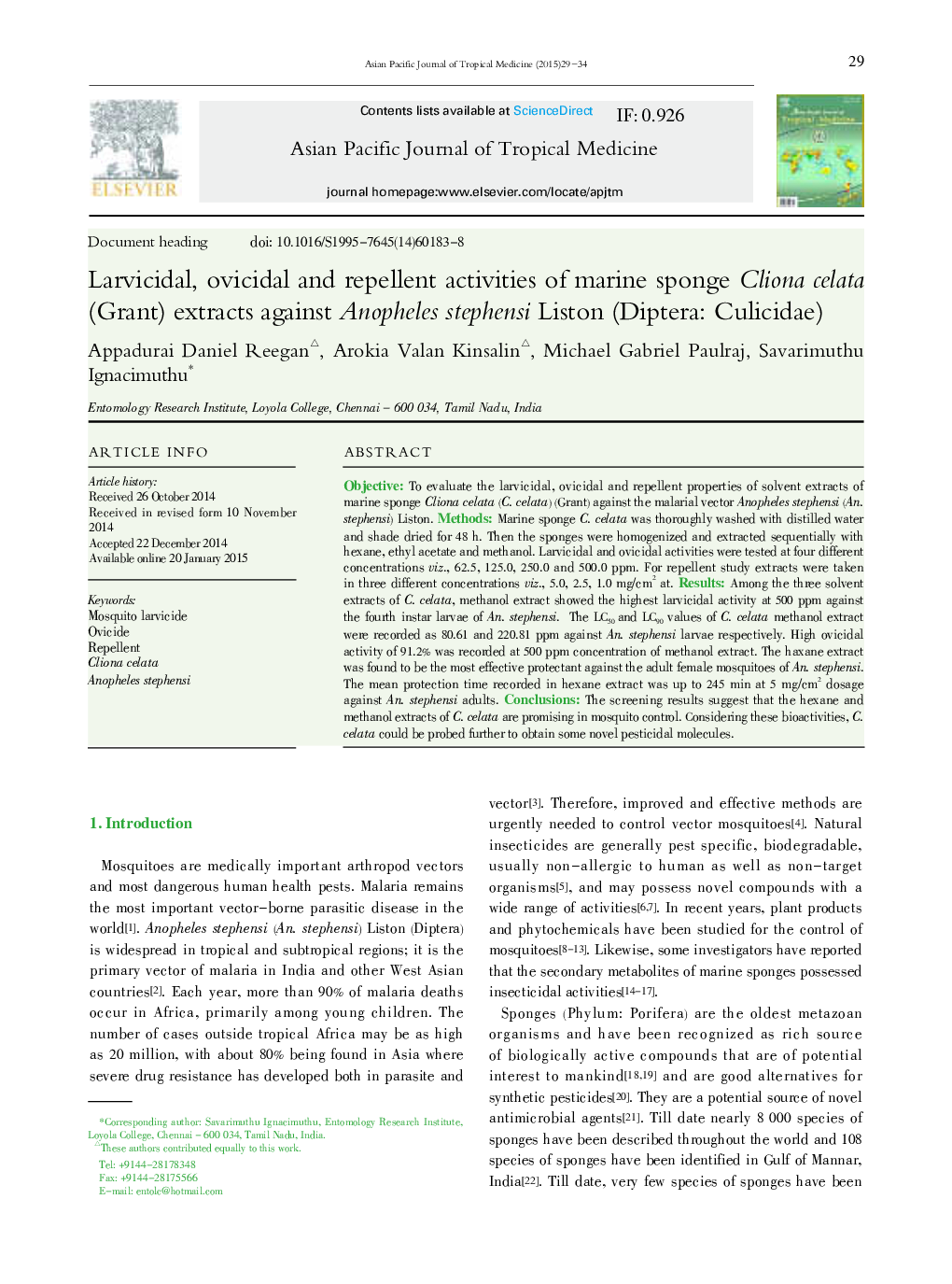| Article ID | Journal | Published Year | Pages | File Type |
|---|---|---|---|---|
| 3455471 | Asian Pacific Journal of Tropical Medicine | 2015 | 6 Pages |
ObjectiveTo evaluate the larvicidal, ovicidal and repellent properties of solvent extracts of marine sponge Cliona celata (C. celata) (Grant) against the malarial vector Anopheles stephensi (An. stephensi) Liston.MethodsMarine sponge C. celata was thoroughly washed with distilled water and shade dried for 48 h. Then the sponges were homogenized and extracted sequentially with hexane, ethyl acetate and methanol. Larvicidal and ovicidal activities were tested at four different concentrations viz., 62.5, 125.0, 250.0 and 500.0 ppm. For repellent study extracts were taken in three different concentrations viz., 5.0, 2.5, 1.0 mg/cm at.ResultsAmong the three solvent extracts of C. celata, methanol extract showed the highest larvicidal activity at 500 ppm against the fourth instar larvae of An. stephensi. The LC50 and LC90 values of C. celata methanol extract were recorded as 80.61 and 220.81 ppm against An. stephensi larvae respectively. High ovicidal activity of 91.2% was recorded at 500 ppm concentration of methanol extract. The haxane extract was found to be the most effective protectant against the adult female mosquitoes of An. stephensi. The mean protection time recorded in hexane extract was up to 245 min at 5 mg/cm2 dosage against An. stephensi adults.ConclusionsThe screening results suggest that the hexane and methanol extracts of C. celata are promising in mosquito control. Considering these bioactivities, C. celata could be probed further to obtain some novel pesticidal molecules.
